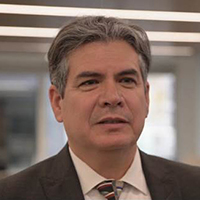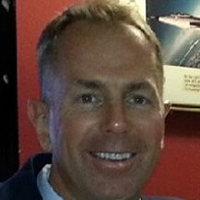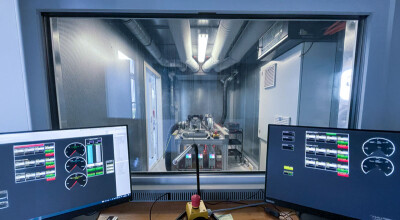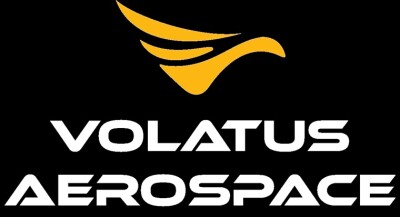Drones are being used in a variety of applications across the process, power & utilities industries. Whether it's to reduce cell tower inspection costs by up to 50% with drones or to use machine learning to automate the detection, classification and reporting of anomalies found during an inspection of a railway or simply to prove where and how drones can make a difference in the energy sector, it's clear that the technology is being used to create real value.
To highlight how this value is being created, we’ve put together a list of 7 drone visionaries who are working in this field along with a bonus visionary whose interest goes beyond this specific application of the technology. Of course, all of the people on this list have worked in and are focused on a variety of industries and markets, which is just part of the reason that this list should simply be the starting place for anyone intent on discovering all of the people that are making a difference in the process, power & utilities sectors and the drone industry as a whole. If you’d like to learn more about these visionaries, you can discover the sort of insights some of these folks and plenty more will be looking to share at upcoming industry events.
To see all of the visionaries in our 7 commercial drone markets, click here.
 Art Pregler
Art Pregler
Who is he?
Art Pregler is the Director of Construction & Engineering Mobility Systems at AT&T and oversees AT&T ATO Unmanned Aircraft Systems Program and AT&T Mobility’s Tower Safety Program. He is responsible for creating and recommending integrated strategic vision to senior leaders.
How is he making an impact?
Art got into drones during his 30-year career as a U.S. Air Force Command & Control Officer, and a Mission Control Specialist, where he started shooting down drones for training purposes, and from there he moved on to surveillance drone programs. Prior to his current role, he was the Director of National Cell Site Programs for AT&T, responsible for policies, processes, systems, and supplier management related to the deployment and modification of AT&T’s nationwide portfolio of 65,000 cell sites.
Last September, after Hurricane Maria hit Puerto Rico, Art’s team was responsible for the Flying COW (Cell on Wings) program. By using a tethered drone that beamed mobile data signals up to 40 miles in all directions, AT&T provided Puerto Ricans with a working communications system.
What’s on the horizon?
AT&T is committed to empowering first responders with the next generation of communications tools. In May 2017, the “newest superhero of AT&T’s Network Disaster Recovery (NDR) Team – ‘The Extreme-Weather Drone’”, as Art says, took its first flight in Bedminster, New Jersey. The drone can see through obstacles, fly through rain, operate in extreme temperatures and communicate in areas without infrastructure.
“This year we’ll be especially well prepared with this innovative new tool in our arsenal”, he writes. “We’ll have our new all-weather Flying COW ready to deploy when and where it’s needed. Not just to restore our critical connections, but also to help first responders on their mission to save lives and restore communities.”
 Chris Fleming
Chris Fleming
Who is he?
Chris Fleming is the CEO at Cyberhawk, a company that is transforming digital asset management, on- and offshore, through the use of drones and industry-specific software. Serving the oil & gas, utility, renewables and rail industries, the company has more than 30 world firsts to its name.
How is he making an impact?
In late 2017, Cyberhawk performed a Gas Terminal Inspection with Intel Falcon 8+, where the drone alone captured 1,100 images, translating to 12GB of data, over the span of one to two days, whereas using conventional methods typically take a three-man team three days to achieve. Their work is helping to define how commercial drone technology can help to drive business efficiency and transformation.
Recently, Cyberhawk received the Venture-backed Management Team of the Year accolade at the 2018 BVCA Scottish Management Team awards.
What’s on the horizon?
Chris thinks the way we process and use data to visualize assets is one of the biggest shifts in the last decade, and “one of the main drivers of this growth will be the requirement to collect asset data as quickly, safely and cost-effectively as possible”.
 Dyan Gibbens
Dyan Gibbens
Who is she?
Dyan Gibbens is the CEO & founder of Trumbull Unmanned. The company empowers their clients to integrate safe UAS technology into sustainable solutions. The company maps, inspects and monitors critical infrastructure, and senses fugitive gases on upstream, midstream, and downstream initiatives both on and offshore. Their aim is to empower clients to integrate safe UAS technology into sustainable solutions.
How is she making an impact?
In May 2018, Trumbull partnered with Alaska and became one of the Department of Transportation UAS Integrated Pilot Program (IPP) teammates. As part of the IPP, Trumbull aims to continue their efforts on commercial BVLOS, emergency response, and integrating sense-and-avoid technology. Since the IPP is an opportunity for state, local, and tribal governments to partner with private sector entities in order to accelerate the integration of drones into the airspace, Dyan's work could define new FAA rules that will allow more complex low-altitude operations.
What’s on the horizon?
Dyan has previously talked about her "blue sky” vision for UAS, which evokes the concepts of safety, optimism, passion, and success with UAS. She's also discussed the value they've been able to create thanks to improvements in safety, productivity, and cost. All of these topics will take on new definitions and priorities within the context of the IPP to shape and change upcoming FAA regulations.
Additionally, Dyan wants to continue to support shared goals of STEM empowerment, women in tech, and veterans initiatives. They are currently solidifying tech, energy, and university partnerships.
 Ed Hine
Ed Hine
Who is he?
Ed Hine is the VP of Marketing and BD at HAZON Solutions, a drone service provider focused on critical infrastructure inspections for Fortune 500 utility and industrial clients. The company leverages their aviation expertise to collect actionable data that is otherwise difficult, dangerous or costly to gather.
How is he making an impact?
While HAZON has and continues to pioneer drone inspection service operations and development/testing programs, the recent partnership the company formed with Aeryon Labs showcases how they’re taking this commitment to the technology to another level. Ed also spearheaded a new partnership between HAZON and PrecisionHawk which will help take BVLOS operations out of an R&D phase and expand it to a routine or production level.
Additionally, Ed has worked with organizations of all sizes as they shift from “exploring” to “implementing” drone technology, and helps them define what approach is going to work best. HAZON’s goal to help companies build a complete drone program that nests within existing enterprise policies and procedures has allowed organizations to minimize the burden of adoption across their company.
What’s on the horizon?
Discussion and difficulties associated with insourcing or outsourcing will remain an issue for users in the short and long-term, and much of that comes from a company not knowing what they don’t know. It’s one of the reasons the approach to adoption and integration that Ed has helped pioneer has been so influential. That looks to become even more of an acute issue as drone programs become more complex with increased adoption rates of BVLOS and other expanded operations.
“We work hard to make drone flight operations highly accessible and practical for large organizations and I think they appreciate that effort,” he said. “We receive great feedback on our training techniques and style. Our training is largely mirrored off of our experience flying F/A-18s in the US Navy. In the Navy, we had an extremely systematic approach to training that incrementally advanced a student’s capability with a focus on hands-on work and an emphasis on safety. We’ve brought that mindset to our drone training program heavily borrowing from techniques used at TOPGUN and throughout the naval aviation community. We believe this mindset will be even more important as we expand our BVLOS training operations.”
Eileen Lockhart
Who is she?
Eileen Lockhart has been involved with Xcel Energy’s UAS program since its inception and has served as the program manager for the last two years. Under her leadership, The UAS team has successfully executed several proof-of-concept missions to demonstrate that the technology can successfully improve safety and productivity across a number of businesses.
How is she making an impact?
Under Eileen's leadership, the UAS team developed a governance framework, ensuring Xcel Energy is compliant with all federal and local regulations and recently completed the first beyond-line-of-site mission in the history of the U.S. electric utility industry. It represented a major milestone for the drone industry as a whole since it means they are the first utility to conduct flights that will enhance grid reliability and safety for their employees and the public. Xcel Energy inspects more than 320,000 miles of electricity and natural gas infrastructure to ensure the safety and reliability of its energy system. This work should define what kind of value can be created when organizations are permitted to operate BVLOS.
What’s on the horizon?
In 2019, Xcel Energy plans to deploy an advanced distribution management system (ADMS), which automates grid operations, improves the speed and efficiency of response to variations in customer power usage, and facilitates analyses of and planning for customers’ future energy use. However, collecting the needed information from substations, such as nameplate data from circuit switchers, transformers, switches and breakers, is an expensive and time-consuming task. To overcome this, Xcel Energy will make use of UAS.
 Ken Stewart
Ken Stewart
Who is he?
Ken Stewart is the General Manager of AiRXOS, a GE venture, focused on accelerating the safe, efficient, and scalable growth of unmanned vehicles in the National Air Space. AiRXOS offers UAV technologies, services, infrastructure and the advanced operations necessary to unlock the emerging markets of autonomous flight. AiRXOS is a venture between GE Business Innovations and GE Aviation and is a wholly-owned subsidiary of GE.
How is he making an impact?
AiRXOS has been selected by several programs to help develop “unmanned traffic management” systems and automated drone certification programs. For example, DriveOhio’s UAS Center invested $5.9 million for AiRXOS’ unmanned traffic management research and development efforts. The plan is to fit 35 miles of U.S. Interstate 33 between Dublin and East Liberty in Ohio with sensors that can transmit UAS tracking and detection data to the Department of Transportation’s Traffic Management Center, to prepare for future package deliveries or passenger drone traffic. AiRXOS is doing similar work for the NUAIR corridor in Central New York and was also just recently named on three UAS IPPs, including San Diego, Memphis, and Choctaw Nation.
Ken is a seasoned technology leader with over 20 years of global experience in technology innovation, business development, emerging markets and sales, in both start-up and global 500 corporations. He is a recognized leader in the telecom and utilities industries, having held SVP and VP leadership roles for Federated Wireless, Syniverse, NeuStar, and GridPoint.
What’s on the horizon?
According to Ken, GE is expanding its role in drone technology and the Unmanned Traffic Management infrastructure. In 2017, GE launched Avitas Systems as an inspection solution using robotics and predictive analytics – now, with AiRXOS, GE is looking at the Unmanned Traffic Management system overall and delivering the key technologies around that system including cloud-based infrastructure platforms, waiver and exemption services, and intelligent avionics with edge computing for the drone itself.
"While the industry is still in the ‘crawl, walk’ stages of the ‘crawl, walk, run’ approach – there are technology leaps being made every day around advanced operations,” Ken said. "We expect 2019 and 2020 to be breakthrough years for the commercialization of advanced drone operations that will affect infrastructure inspections, emergency medical deliveries, retail applications, and more. We also see automation around the certification and waiver process and an increasing need for data and analytics within the UTM itself. We may not get to airborne urban mobility by 2020, but there no doubt that is around the corner."
 Todd Chase
Todd Chase
Who is he?
Todd Chase is Shell’s Aviation Safety and Compliance Manager for the Americas. At Shell, Todd is supporting safe and reliable aviation operations (manned and unmanned) throughout North and South America. Prior to Shell, Todd was Oceaneering’s Global Unmanned Aircraft Systems(UAS) Program Manager. There he was responsible for developing and integrating UAS throughout Oceaneering’s global network of asset inspection and data management services. Focused on the expansion and safe integration of UAS capability offshore, Todd developed critical insights around how drones are most appropriately being utilized in the oil and gas industry. He also had prior experience as an aviation advisor for BP Global Aviation Services where he supported some of the first commercial UAS operations in the United States. Todd also worked closely with other major oil and gas companies to develop the first ever industry recommended practices for UAS use. He is a retired Air Force pilot where he served as Chief of Safety for a MQ-1 Predator base conducting UAS operations in the National Airspace System and abroad.
How is he making an impact?
Previously as Oceaneering International’s UAS Program Manager, Todd built and managed a network of UAS operators compliant to Oil and Gas Industry UAS standards to support multiple verticals globally. He joined Shell in April 2018, where he is helping to build their UAS programs supporting diverse operations in the Americas. As one of the co-authors of the first industry UAS guidance documents, Todd continues to focus on the safe integration of UAS into numerous applications. He realizes UAVs cannot currently replace manpower in all situations where repairs or “hands-on” requirements exist, but that they can be effective in increasing efficiencies, reducing risk and enhancing data sets. This vision is helping to define where and how the technology can make a difference in the oil & gas industry.
What’s on the horizon?
Todd has encountered challenges when it comes to individuals trying to sell their drone services to oil & gas companies. These interactions have led Todd to be cautious of stated effectiveness and capabilities and focus on proven results. Todd realizes a focus on people, training, process, procedures and experience are all as important as the technology itself. The emphasis on the Safety Management Systems for UAS will continue to help define how the technology can be successfully integrated into this industry.
"Having that experience helps tremendously, and it’s hard to undervalue that point just because there are so many possible hazards you can encounter in this industry," Todd mentioned in an interview. "Hazards not identified in pre-flight meetings can happen once you’re on the job site, so experience and a robust SMS will always be key factors enhancing UAS safety."
 BONUS VISIONARY: Anil Nanduri
BONUS VISIONARY: Anil Nanduri
Who is he?
Anil Nanduri is the Vice President in the New Technology Group and General Manager of the UAV segment at Intel Corporation. His contributions to Intel’s mobile platforms have earned him three Intel Achievement Awards, and he was also responsible for new business opportunities for Intel RealSense technology. He was recently appointed to the NASA Advisory Council Aeronautics Committee.
How is he making an impact?
Data is driving the modern world in countless ways, and Nanduri is one of the people working to figure out where and how data can enable connection points with drones and systems like the Internet of Things (IoT). It's a trend that is driving an explosion of capabilities, but value there is only created when efficiencies and return on investment are related to something specific, such as increasing the visibility of an asset.
That's the exact kind of value that the Intel Insight Platform, which generates 2D and 3D models, is designed to open up. The system takes measurements and makes annotations for sharing across teams, as well as running advanced data analytics, such as change detection and plant counting. These efficiencies are just the beginning of the value that can be created once those connection points between drones and IoT systems are further defined.
What’s on the horizon?
Anil has previously talked about how data will be used to prioritize and predict maintenance activities at much lower operational expenses. Much of that ties back into the autonomous capabilities of drones which will become easier to utilize from a technology and regulatory standpoint. Intel is focused on achieving a great deal with their hardware and software solutions which will reshape the expectations users have around how they want to be using the technology.
"The Intel Mission Control flight planning software and Intel Insight Platform are software and services applications that will make both the data capture and the data analyses process more automated, making the technology easier to use and accessible to more people," Nanduri mentioned in a recent article. "It is our vision that once a flight is planned, the operator could push a button and the drone would execute the flight as planned. Once the data is uploaded into the cloud, Intel Insight platform will automatically do the data analyses and processing, and provide reports to the client.”
















Comments